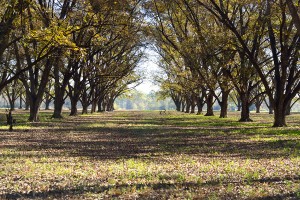Growing and Managing a Pecan Orchard | Natchitoches Pecans
Posted by wernuts2 on 26th Aug 2016
 If you're looking to establish your very own pecan orchard, there are many things you need to consider before going into this possible business endeavor. Pecan orchards take a lot of time, careful planning and management, and a well-planned, well organized orchard will always prove to be more efficient and require less input than one which is not. To help you along your journey as a proud pecan orchard owner, we've decided to go over a few basics and characteristics your pecan orchard should have to get you started.
If you're looking to establish your very own pecan orchard, there are many things you need to consider before going into this possible business endeavor. Pecan orchards take a lot of time, careful planning and management, and a well-planned, well organized orchard will always prove to be more efficient and require less input than one which is not. To help you along your journey as a proud pecan orchard owner, we've decided to go over a few basics and characteristics your pecan orchard should have to get you started.
One of the most important aspects of a successful and flourishing pecan orchard is good soil. It is also helpful to have a firm understanding of root growth in relation to soil conditions when selecting the location for your orchard. For instance, pecan growth tends to increase drastically in the spring, peaking in late May and early June, and will steadily decline around mid-September, though the growth will continue into the winter, just at lower levels. For the best rooting and production, it is best for the soil to be deep, fertile, and well drained, with a good holding capacity, and pecans prefer soil with a sandy loam texture. To prepare the land, you must clear and level the site, improve drainage, fertilize, lime, and subsoil the entire site for planting. The site will fare best when cleared completely of all trees and brush, and while you can burn this debris, it's best to do so away from the planting area, as wood ash can raise the pH balance of the soil and lead to nutrient imbalances. To harvest efficiently requires a smooth surface, so be sure that you level the area carefully, and always take soil samples to test nutrient availability before planting. There are a few different ways you can design your orchard layout, and the way you lay it out is important. The layout should be ideal for providing proper pollination, ease in operation, and aid in future tree thinning. They can be arranged in a square, rectangle, diagonal shapes, or in a quincunx, triangle, or contour shape. While square is the most common, any of these patterns can prove successful as long as your rows are spaced properly to allow a good distance between rows. As far as management goes, it really depends on the cultural inputs, the level of pest management needed for the area, and the economic returns expected. For more information on pecan orchard management and growth.
